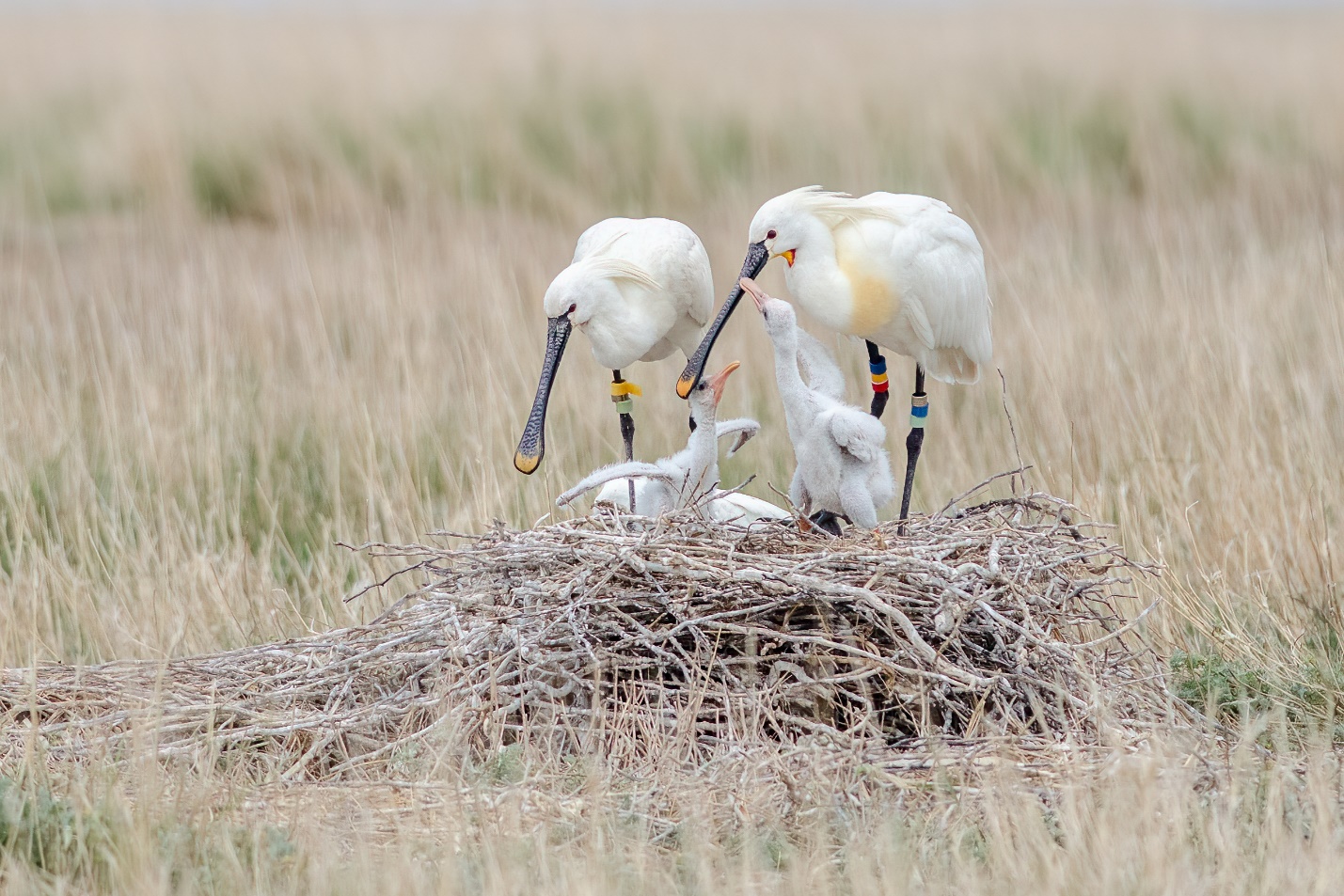The breeding season has started. While spoonbills in some colonies are already incubating eggs, others are still in their wintering areas. We know this because we follow several spoonbills with GPS-trackers. They can be followed live at https://maps.nioz.nl/spoonbills-NL .
The GPS-trackers not only learn us about the timing and routes of migration, and the sites they visit, but also about the time allocation and spatial distribution during the breeding season, as well as how breeding partners divide the parental tasks. In a recently published article, we show that the agenda of a female spoonbill during the breeding season looks very different from that of her partner, both in time and space.
During the breeding seasons of 2013 – 2019, we followed 9 adult female and 13 male spoonbills with GPS-trackers in and around their breeding colony on Schiermonnikoog, a barrier island in the Dutch Wadden Sea. These trackers register the location of the bird every 10 mintues, and also measure the acceleration in three directions, allowing a reliable estimation of what the bird is actually doing (resting, walking/foraging, flying). In an earlier study, where in a breeding colony in Doñana (Southern Spain) several nests were observed, males turned out to sit on the nest during the day, and females at night. As spoonbills are tactile foragers, they can forage during both day and night. The colony in Doñana is surrounded by freshwater foraging habitats, that are in principle available during both day and night. In contrast, the colony of Schiermonnikoog is situated along the Wadden Sea, where foraging is only possible around low tide. In this study, we invested whether spoonbills adjust their nest attendance rhythm to the tidal rhythm of nearby foraging opportunities.
This turned out not to be the case. Like in Doñana, male spoonbills on Schiermonnikoog attend the nest during the day and females at night. In addition, we discovered that females forage almost exclusively in the nearby Wadden Sea, while the – somewhat larger – males often travel larger distances between the colony and foraging grounds to forage in the freshwater Lauwersmeer on the mainland. These differences in foraging habitat use were also apparent before and after the breeding season. Moreover, among males, we found a significant relationship between bill length and the time spent foraging in freshwater compared to marine habitats. This suggests that the sex-specific foraging habitat use was driven by habitat preferences, potentially caused by size-dependent foraging skills, rather than by sex-specific parental care duties.
Another remarkable finding was that females, before and after their nocturnal parental duties, shifted to foraging primarily at night. This suggests that spoonbills prefer to forage at night, implying that females forage at suboptimal times (i.e. during the day) during the period when they have to take care of their eggs or chicks. Why spoonbills have such a strict diel rhythm of parental care is yet to be resolved.
You can read the entire article here . If you do not have access, just drop us an email !

A pair of spoonbills with two large young on Schiermonnikoog - Photo: Marycha Franken

